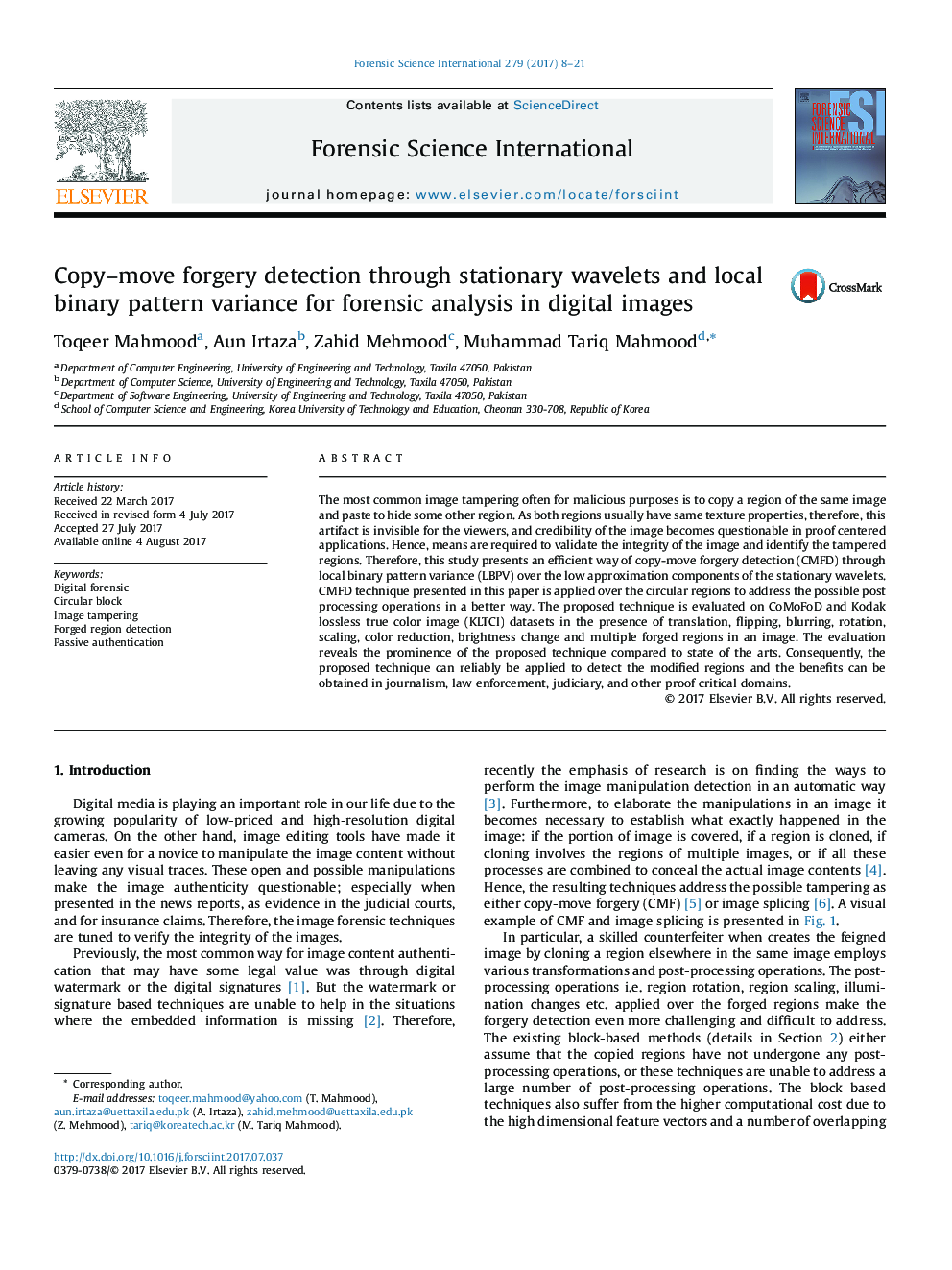| Article ID | Journal | Published Year | Pages | File Type |
|---|---|---|---|---|
| 6462093 | Forensic Science International | 2017 | 14 Pages |
â¢A copy-move forgery detection technique for forensic analysis in digital images is proposed.â¢The technique utilizes LBPV based features extracted from the overlapping blocks of approximation sub-band of SWT.â¢The proposed technique performed precisely for various image post-processing operations.
The most common image tampering often for malicious purposes is to copy a region of the same image and paste to hide some other region. As both regions usually have same texture properties, therefore, this artifact is invisible for the viewers, and credibility of the image becomes questionable in proof centered applications. Hence, means are required to validate the integrity of the image and identify the tampered regions. Therefore, this study presents an efficient way of copy-move forgery detection (CMFD) through local binary pattern variance (LBPV) over the low approximation components of the stationary wavelets. CMFD technique presented in this paper is applied over the circular regions to address the possible post processing operations in a better way. The proposed technique is evaluated on CoMoFoD and Kodak lossless true color image (KLTCI) datasets in the presence of translation, flipping, blurring, rotation, scaling, color reduction, brightness change and multiple forged regions in an image. The evaluation reveals the prominence of the proposed technique compared to state of the arts. Consequently, the proposed technique can reliably be applied to detect the modified regions and the benefits can be obtained in journalism, law enforcement, judiciary, and other proof critical domains.
